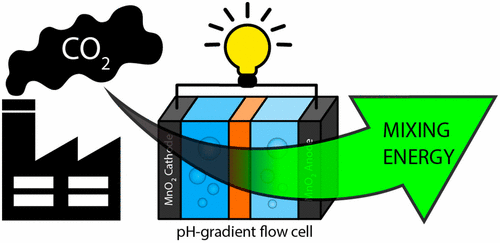Climate change is bad, and humans are causing it with all of our cars and factories belching greenhouse gases into the atmosphere. Now that that’s out of the way, and since it doesn’t seem like the US government is planning to do anything about it, what if we could actually use those emissions for good — like to produce electricity?
Image: AP
Penn State scientists are dreaming up ways to use carbon dioxide to create electricity via fuel cells. Others have kicked the idea around before, but previous outcomes were expensive and didn’t produce a lot of power. The new fuel cell produced 200 times more power per unit of size than past attempts — better, but still not a whole lot. CO2-gobbling batteries aren’t going to solve the climate crisis any time soon, but it’s possible they could offer a short-term way of harnessing some of those emissions and keeping them out of the atmosphere.
The battery works by creating a gradient between two channels with different concentrations of positively-charged protons, or pHs. In one channel, a sodium bicarbonate and water solution was mixed with air; in the other the solution was mixed with carbon dioxide. This created a difference in the pH, with a higher concentration of protons on the carbon dioxide side. That whole setup was sandwiched between two manganese oxide electrodes. The gradient between the solutions causes negatively charged electrons to flow from the electrode with a lower proton concentration, the air side, to the electrode with the higher proton concentration, the carbon dioxide side, creating a current. The researchers can recharge the battery by switching the solution, and published their results in the journal Environmental Science and Technology Letters last month.

Image: Kim et al
There are a whole lot of things that need to happen before this type of cell is ready to power your iPhone, however. Right now, the power density of the battery is really, really small — around one watt per square metre. There are other fuel cell technologies with similar power densities, including a research effort aimed at harness electricity from using ocean and river water. But a one square metre battery running for an hour would still probably supply less power than a double A battery. Additionally, the cell as-is uses pure carbon dioxide, rather than exhaust fuel. Extra resources would be required to distil the gas, from car exhaust or power plant smokestacks, to use in the battery.
Ultimately, the battery presented here could be a useful, affordable way to produce electricity from carbon dioxide. It could also be a total waste of money if the energy output is way lower than the amount of energy it takes to build and charge the battery. Still, it’s nice to think that there are things we can do with our greenhouse gasses other than leaving them in the atmosphere.
